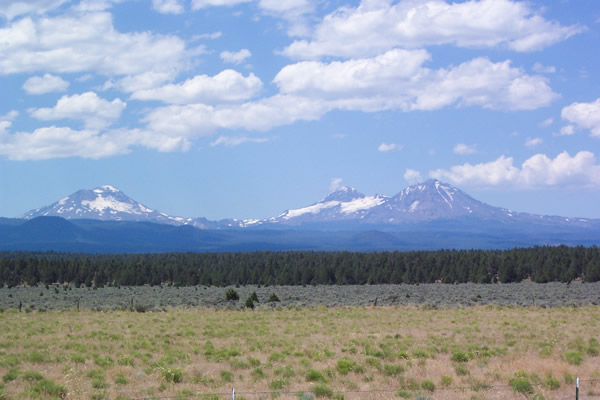 The
Three Sisters
The
Three Sisters  The
Three Sisters
The
Three Sisters
Stopping outside of Sisters, Oregon, along the side the highway at a roadside park, Michael took this picture of the Three Sisters. Soon, we would be backpacking our way around the West side of them.
North Sister is on the right. Middle Sister is sharp peak just left of North Sister. South Sister is on the left.
North Sister is a shield volcano made of basaltic andesite. The shield is about
5 miles (8 km) in diameter. The summit cone is made of cinders, lava flows,
dikes, sills, and a central plug. The flanks of North Sister have been cut by
Pleistocene and Holocene glaciers.
Middle Sister formed after North Sister. Basalt was erupted from fissures on the flanks of the volcano. Andesite lava flows were erupted from a vent near the base of the volcano. Domes and flows of dacite and rhyodacite also make part of Middle Sister. The most recent eruptions were from vents high on the north and south sides of the volcano. The produced long dacite lava flows. Middle Sister has also been eroded by glaciers
South Sister started erupting as activity waned at Middle Sister . South Sister is the youngest of the Three Sisters. A summit crater was formed by a late Pleistocene eruption. The main cone is made of andesite, dacite, and rhyodacite. The most recent eruption was about 1,900 years ago. Glaciers carved cirques in the volcano but did not remove the summit crater.